
Transit Briefs: Brightline, Hitachi Rail, MDOT, Omaha Streetcar, SacRT, Seattle Transit
Written by Marybeth Luczak, Executive Editor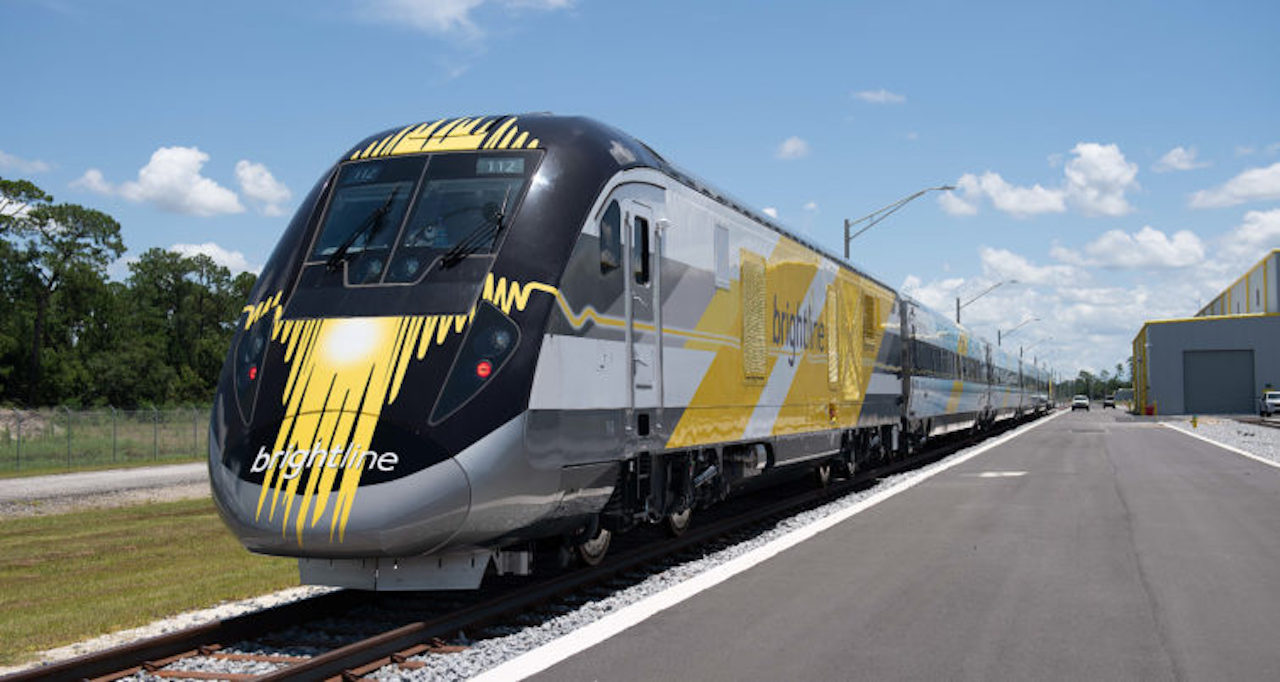
Brightline train in Orlando. (Photo by David C. Lester)
Ahead of service to Orlando, train testing of up to 110 mph continues for Brightline, Florida’s private-sector passenger railroad. Also, Hitachi Rail publishes a study on attitudes toward public transport across eight global cities; former Washington Metropolitan Area Transit Authority (WMATA) General Manager and CEO Paul Wiedefeld is tapped as Maryland’s next Transportation Secretary; Warren Buffett speaks out against planned streetcar service in Omaha, Neb.; Sacramento Regional Transit District (SacRT) receives the Transportation Security Administration’s (TSA) Gold Standard Award for transit security and emergency preparedness programs; and a new Seattle, Wash., program gives free transit cards to public housing residents.
Brightline on Jan. 24 reported that its test train will run at maximum speeds of 110 mph through the Treasure Coast from Jan. 25 through Jan. 28. The testing will take place along an 11-mile section of track in Martin and St. Lucie counties.
Brightline is conducting high-speed testing in preparation for service to Orlando in 2023. Testing is occurring in phases along the 129-mile rail corridor between West Palm Beach and Cocoa.
High-speed testing through the Treasure Coast began in fall 2022, reaching top speeds of 110 mph. Brightline has also completed 79 mph testing through Palm Beach, Martin, St. Lucie, Indian River and Brevard counties.
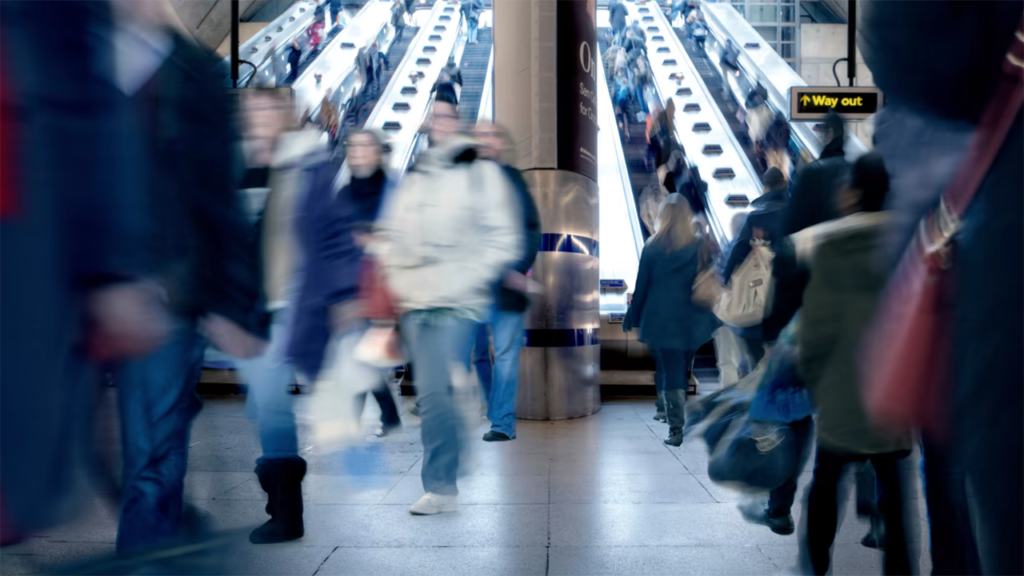
Hitachi Rail on Jan. 24 reported its release of Better Connected: Global Attitudes to Smart Public Transport, which found that 75% of people “would choose a better-connected public transport system, rather than driving.”
Between August and September 2022, independent consumer research company Savanta ComRes polled 8,073 people across London (1,009), Washington, D.C. (1,004), Toronto (1,000), Paris (1,002), Dusseldorf (1,006), Turin (1,020), Dubai (1,021), and Bangkok (1,011) to investigate attitudes toward public transport and smart mobility. Hitachi Rail said it commissioned the research “to better understand the push and pull factors for using public transport and how they interact with Hitachi Rail’s smart, digital [ticketing] solutions the business is rolling out to support cities around the world.”
Following are among the findings:
- What motivates peoples’ travel decisions? Overcrowding (48%) and busyness (42%) of services “are the single biggest factors that put people off,” according to Hitachi Rail. “In contrast, people identify the three C’s—cost, convenience and comfort—as their biggest motivators to travel, with 79% noting the appeal of the ability to avoid crowded services, and 78% highlighting the importance of shortest journey time, and cheapest travel option.”
- What do passengers want? People across cities “share a clear sense of how public transport networks can overcome existing barriers, placing an emphasis on the benefits of digitization,” Hitachi Rail reported. “For example, 73% suggested they would be more likely to travel on public transport if they could see live information on crowding levels on services. This rises to almost 9 in 10 people in Bangkok. The research also shows the public have a strong general understanding of what ‘smart’ transport means, driven by high levels of take-up of digital apps, with 59% of respondents using them to plan or book their journeys.” Hitachi Rail reported that “across every city, the majority (averaging 71%) noted that they now travel differently following the pandemic. Those surveyed do however expect that how they travel will change again (59%).”
- How do we fund better-connected transport networks? The study found that one possible route for charging and paying for better-connected public transport could be via new or increased road charges, according to Hitachi Rail. Overall, 63% were in favor of this as a revenue source, with only 14% against—despite almost two-thirds of people (63%) reporting that they now drive more post-pandemic, Hitachi Rail said. Even in cities with the highest percentage of driving commuters, Hitachi Rail reported there is still a majority in favor of such taxes (51% in Toronto and 52% in Washington).
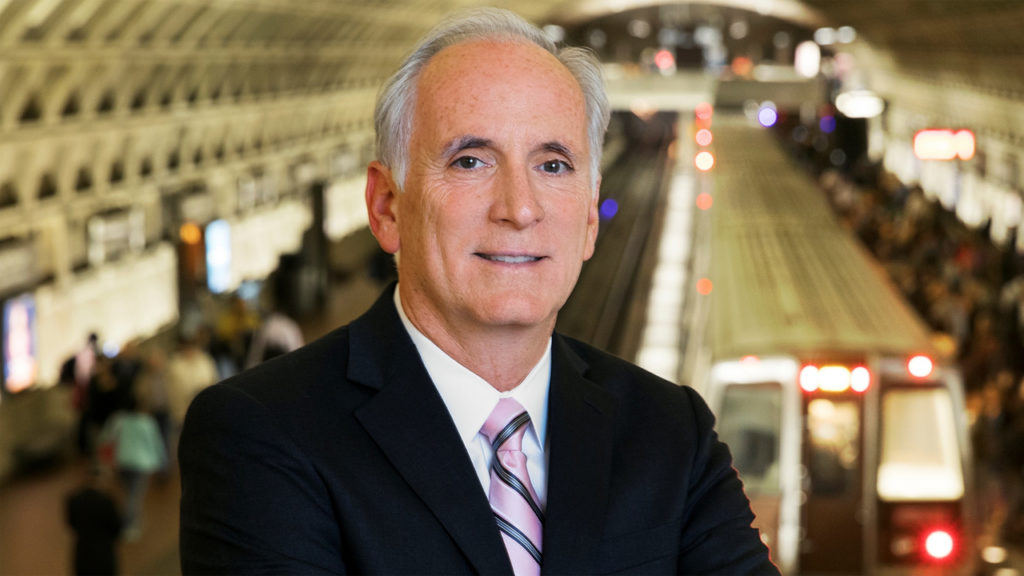
Maryland Gov. Wes Moore has announced that Paul Wiedefeld is the state’s next Transportation Secretary, the DCist reported on Jan. 24. Following confirmation by the Maryland Senate, he would lead the six transportation agencies under the Maryland Department of Transportation (MDOT). This includes the Maryland Transit Administration, which operates local buses (CityLink and LocalLink), commuter buses, light RailLink, metro SubwayLink, Maryland Area Regional Commuter (MARC) train service, and paratransit (MobilityLink). Wiedefeld served most recently as Northeast Regional Transportation Director at HDR, following leadership of WMATA. A 40-plus-year transportation veteran, he has also worked as CEO of Baltimore/Washington Thurgood Marshall International Airport (BWI), as Administrator of the Maryland Transit Administration, and in engineering project management with Parsons Brinckerhoff’s aviation practice.
As Transportation Secretary for MDOT, Wiedefeld would be charged with “several high-profile transportation problems in the capital region,” DCist reported. “The Purple Line light rail project is years behind schedule. The I-495/I-270 toll lane project is in limbo and it’s unclear what its fate will be. He would also likely be key to reviving the Red Line in Baltimore, which [Gov.] Moore has signaled he wants to bring back after former Gov. Larry Hogan killed the project years ago.” Additionally, he “would be one of eight representatives on the [WMATA] board,” according to DCist.
Wiedefeld said during the Jan. 24 announcement that “he and the Maryland Department of Transportation will ‘work in partnership and in transparency with communities,’” DCist reported. “‘We are here to serve as a department that delivers services and facilities to meet (Moore’s) goals of social equity, environmental protection, and sustainable communities, and most importantly, a department that enhances the economic opportunities for all the citizens of Maryland.’”
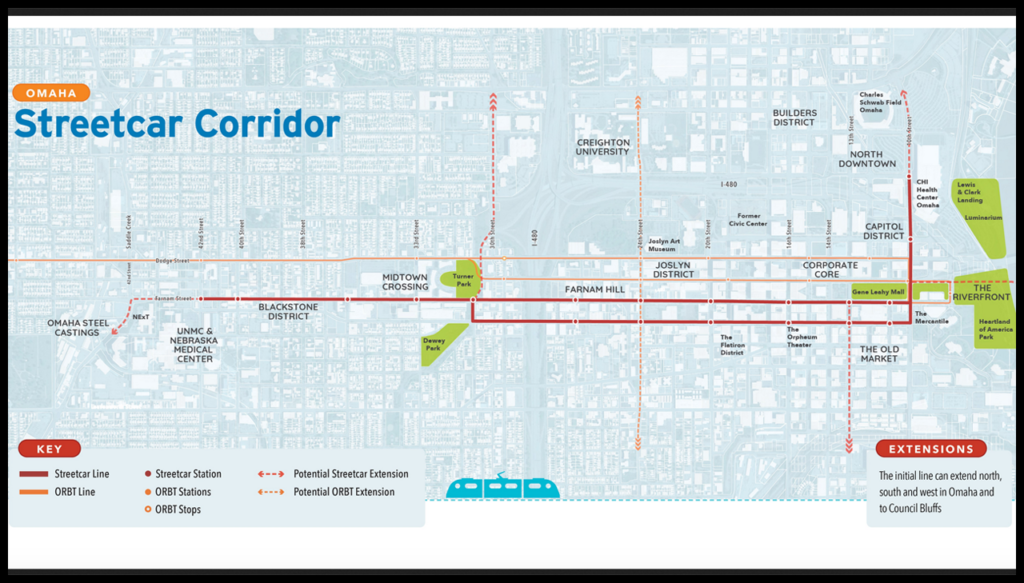
TheStreet on Jan. 25 reported that BNSF owner Warren Buffett expressed opposition to the return of the streetcar to his home city of Omaha in a letter to the editor of Omaha World-Herald.
According to TheStreet, Buffett wrote, “I seldom take sides on local issues. Understandably, it can be off-putting to many to have a wealthy 92-year-old tell them what is good for their future. I’m going to make an exception on the streetcar issue.”
“It’s an important matter, and it’s going to be hugely expensive if implemented,” Buffett continued, according to TheStreet. “For 60 years, I have been interested in the transit industry. In three cities—Dallas, Buffalo and New Bedford—I was a modest-sized owner for many years and in other large cities I have been a creditor of transit operators. I have seen projections and listened to proposals, some by the well-intentioned and some by profit-seeking promotors and advisors. Disappointments almost invariably have followed. The mistakes became imbedded and the costs rolled on.”
“Public transit, it should be emphasized, makes sense as a matter of social equity,” Buffett wrote, according to TheStreet. “‘It requires subsidies, but it helps many,’ Buffett said. But streetcars, he added, ‘are expensive and have very limited utility.’”
“The population actually served is small and routes are inflexible. Residents can be far better served by extended or more intensive service by the bus system. As population, commerce and desired destinations shift, a bus system can be re-engineered. Streetcars keep mindlessly rolling on, fueled by large public subsidies. Mistakes are literally cast in cement.”
According to TheStreet, Buffett praised the “‘good leadership’ of the current mayor but believes that a vote is needed on ‘this huge commitment.’”
The City Council approved financing for the project “via the issuance of municipal bonds last December,” reported TheStreet, which said Omaha plans to build the $306 million streetcar system from next year. For more on the plans for the 3-mile (5.5-track-mile) line, read “A Streetcar for Omaha?” by Railway Age Contributing Editor David Peter Alan.
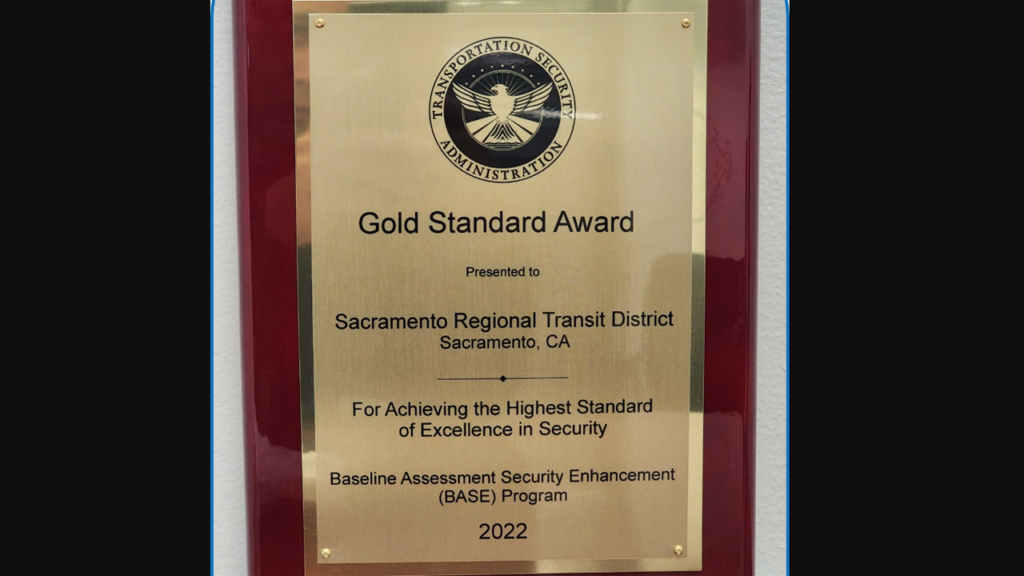
SacRT has been awarded TSA’s 2022 Gold Standard Award for its transit security and emergency preparedness programs. This is the highest recognition TSA can give to a transit agency for achieving top scores during an annual review, which evaluates several aspects of operations, including the security plan, security training, drills and exercise programs, public outreach efforts, and background check processes, according to SacRT.
SacRT in recent years has upgraded its overall safety and security operations, “creating a sophisticated multi-faceted system that includes a 24/7 Security Operations Center (SOC) where SacRT crews monitor over 1,000 live-feed video cameras throughout the bus and rail system,” the transit system reported. “SacRT has several thousand security cameras in use, many of them video cameras, on buses, light rail trains, at all light rail stations and at other SacRT facilities.”
The SacRT SOC is operated in a shared facility with the Sacramento Police Department’s security operations center, and can be jointly used by police and SacRT as a command center during emergency operations.
The transit agency also employs 32 Transit Ambassadors, 30 sworn police officers, 20 private security guards, and 10 monitors at the SOC hub. Additionally, a social service practitioner is on staff “who often takes the lead working with issues involving the unhoused to better connect them with resources,” SacRT said.
TSA has oversight of 6,800 public transit agencies around the country. Every year, it assesses a select number of transit agencies for evaluation through its Baseline for Security Enhancement (BASE) program, according to SacRT. In the most recent round of BASE evaluations, TSA reviewed 108 transit agencies and selected four for Gold Standard Awards, according to SacRT, which also received the award in 2019.
“The Gold Standard Award symbolizes SacRT’s commitment to its customers, its adherence to core principles and its leadership in mass transit security,” said TSA Assistant Administrator Sonya Proctor, the agency’s lead official for surface security. “We are proud of the strong partnership between TSA and SacRT and commend them on their continued commitment to transportation security.”
“The safety and security of our passengers and employees is our top priority every day,” said Henry Li, SacRT General Manager/CEO. “We are honored to be recognized for our hard work and commitment to strive for the highest level of excellence.”
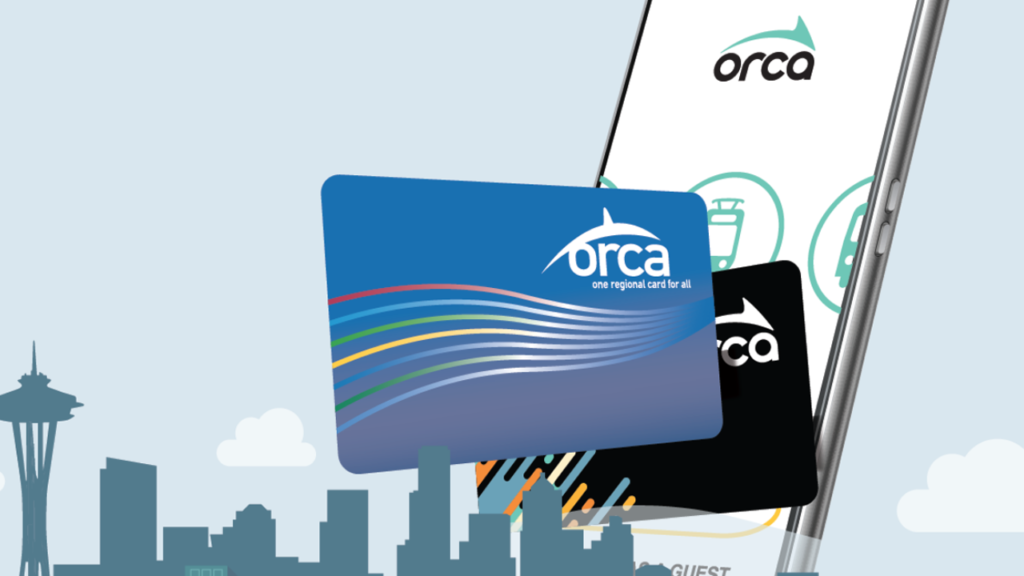
The Seattle Times on Jan. 24 reported that a new city of Seattle program is giving zero-fare ORCA cards to all Seattle Housing Authority (SHA) residents. Expanding on a pilot project for 2,000 SHA residents, now some 10,000 residents will receive the farecards “at an estimated cost to taxpayers of $2.2 million per year, city staff said.”
The ORCA card can be used on Sound Transit, Community Transit, Everett Transit, King County Metro, Kitsap Transit, Pierce Transit, Seattle Street Car, Seattle Monorail, King County Water Taxi, and Washington State Ferries.
“The SHA farecards are funded by a sales tax voters passed in 2020, and they’re valid through 2026,” The Seattle Times reported. “It formerly subsidized free ORCA fares for all youths, but the 2022 Legislature passed statewide free youth fares, underwritten by new carbon taxes. That move gave SDOT a new cash source that it shifted to public-housing residents, explained Laura Lee Sturm, transportation access manager.”
According to the newspaper, the program is “just the latest in a series of fare discounts. Besides youth and public-housing cards, Seattle has provided 2,200 free-fare ‘ORCA Recovery’ cards to restaurant employees and other essential workers in the Chinatown International District, Pioneer Square, Othello and Rainier Beach neighborhoods, until at least Aug. 31, 2023. Another 1,300 community college students in Seattle hold free-fare cards. Regional ORCA Lift cards, promoted by King County Executive Dow Constantine in 2015, have spread to Snohomish and Pierce counties. …”


